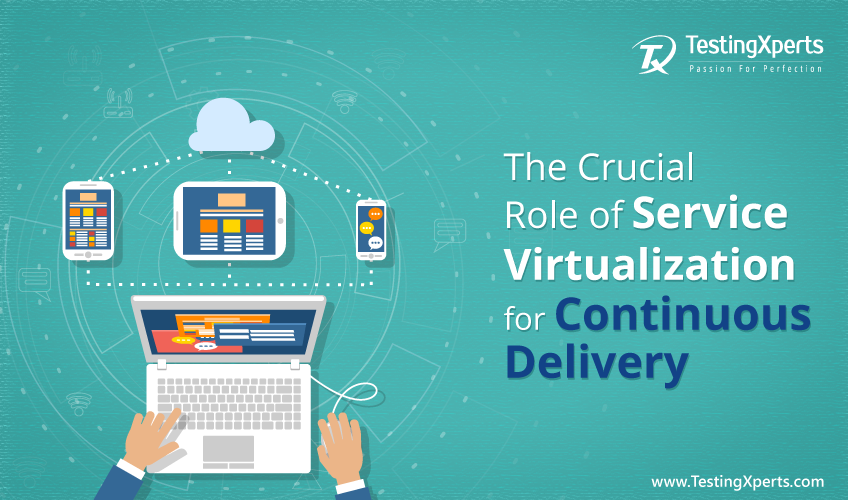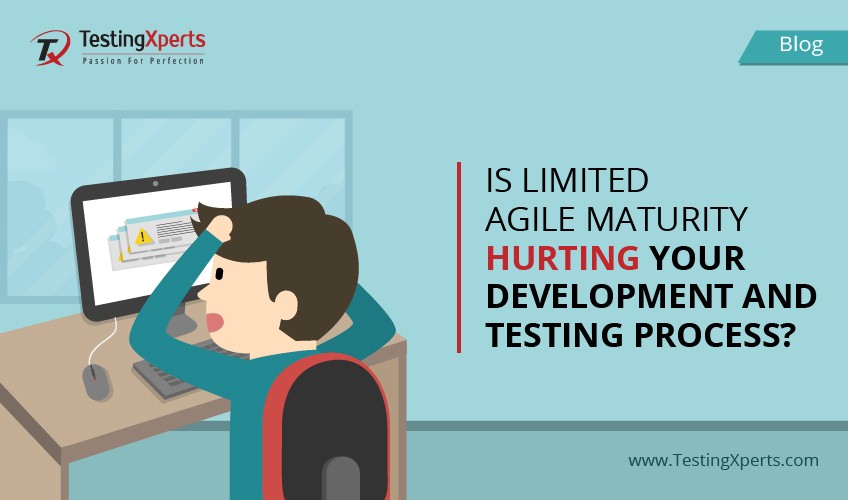
Our current software development and testing landscape require the elimination of each and every bottleneck present. If there is something along the regular development lifecycle that can be tweaked and moved for achieving greater quality and speed, it is a no-brainer to make that move. If you are looking to remove all these constraints, service virtualization should be your choice in 2017. With service virtualization, both developers and testers can create simulated instances of production environments to develop and test.
Contents
1. What is Service Virtualization?
2. Importance of creating Virtual Service Environments (VSEs) for the test environments
3. Challenges faced by virtual test environment
4. Considering virtual test environments as objects in your CI/ CD pipeline
5. Advantages of containerized test environments
6. Key benefits that Service Virtualization brings
Being part of a team that is following DevOps or Agile principles, delivering applications and updates as rapidly as possible becomes one of your essential tenets. Service virtualization provides teams with the option of testing different aspects of an application early, without compromising on the quality.
What is Service Virtualization?
Service virtualization is the process of emulating the performance of selected components within an application to enable end-to-end testing of the application. It provides testing teams with the application development and delivery ecosystem with a sequence of API test capabilities. Service virtualization can be used to create realistic simulations of needs that are not available. Service virtualization lets the teams to start testing early, more competently and continuously.
With the help of service virtualization, it is easier to replace unavailable dependencies with easily configurable and accessible virtual assets. Application development teams can use these virtual services to conduct integration testing earlier in the development process. Virtualized test assets appear and act real but can be duplicated and made available at times during the unavailability of real assets with the testing team. Virtualizing the test assets can enable your organization to create robust test frameworks that can provide comprehensive test coverage while keeping the costs low.
Importance of creating Virtual Service Environments (VSEs) for the test environments
To reach the ultimate goal of testing enterprise applications, organizations must build their own test environments by manually replicating the components they need to interact with. Traditional testing tools do not have the proper functionality to test these applications on a collaborative basis thoroughly. Virtual Service Environments provide multiple teams to have a realistic technique to simulate the test of an application. Virtual environments also help in reducing the hardware and installation costs.
Challenges faced by virtual test environment
Challenges offered by constrained access to dependencies during the development and testing becomes stronger when organizations move towards continuous delivery. The absence of suitable test environments for your dependencies can become a huge barrier when you want to build, test and deploy your software on demand without any help from real testers. Some of the key challenges faced by virtual test environments are listed below:
• Significant Increase in Testing cost
• Unstable and Late Delivery of environment
• Lack of Consistency
Considering virtual test environments as objects in your CI/ CD pipeline
It is a huge step to run your virtual test environments at some server in your network. However, service virtualization is the next step, as it serves as an enabler for continuous delivery. In this process, virtual assets are considered as artifacts that can be created, used, and destroyed at your convenience.
The most effective way to treat your test environments as continuous delivery objects is by containerizing them. Containerizing can be done by using various platforms, for example, Docker. With the help of these platforms, you can create an image that contains your service virtualization engine, data sources that contain the necessary test data, and all virtual assets to emulate the required behavior.
Advantages of containerized test environments
There are several compelling advantages for development and testing activities that can be brought by containerized test environments in your continuous delivery process:
• Test environments can be rolled on demand, so there is no need for waiting up until that dependency you need is accessible and configured like you want it to be.
• There is zero need for you to worry about resetting the test environment to its original state after testing is completed. You need to throw the test environment away and spin up a new instance ready for your next test run.
• Having the virtual test environment at your service every time makes it easier to analyze and reproduce bugs.
Key benefits that Service Virtualization brings
• Rapidly creates situations and patterns that emulate the expected activities
There are various instances where glitches are felt while working on connected components within a system. Service virtualization helps in minimizing these glitches by virtually providing assets and resources. For example, by using graphical interface, you can create a virtual asset that produces the required behavior for developments and testing tasks.
• Provide common access to emerging assets
There is a need for virtual assets to various team members or any team member who is located universally. Service virtualization expedites a scenario where the assets are available for everyone, on-demand and at a given point of time.
• Cost Savings
By leveraging service virtualization, you can immensely save costs in the development and testing cycle.
TestingXperts is an expert in testing a plethora of domains for various organizations while adopting Agile and DevOps testing approach in different stages in the development cycle. We have been closely working with enterprises to provide Service Virtualization and testing solutions and effectively emulate virtual assets to automate integration, regression, and performance testing. Connect with us to know more about our testing services and bring speed and quality for your releases.
Discover more
Get in Touch
Stay Updated
Subscribe for more info





